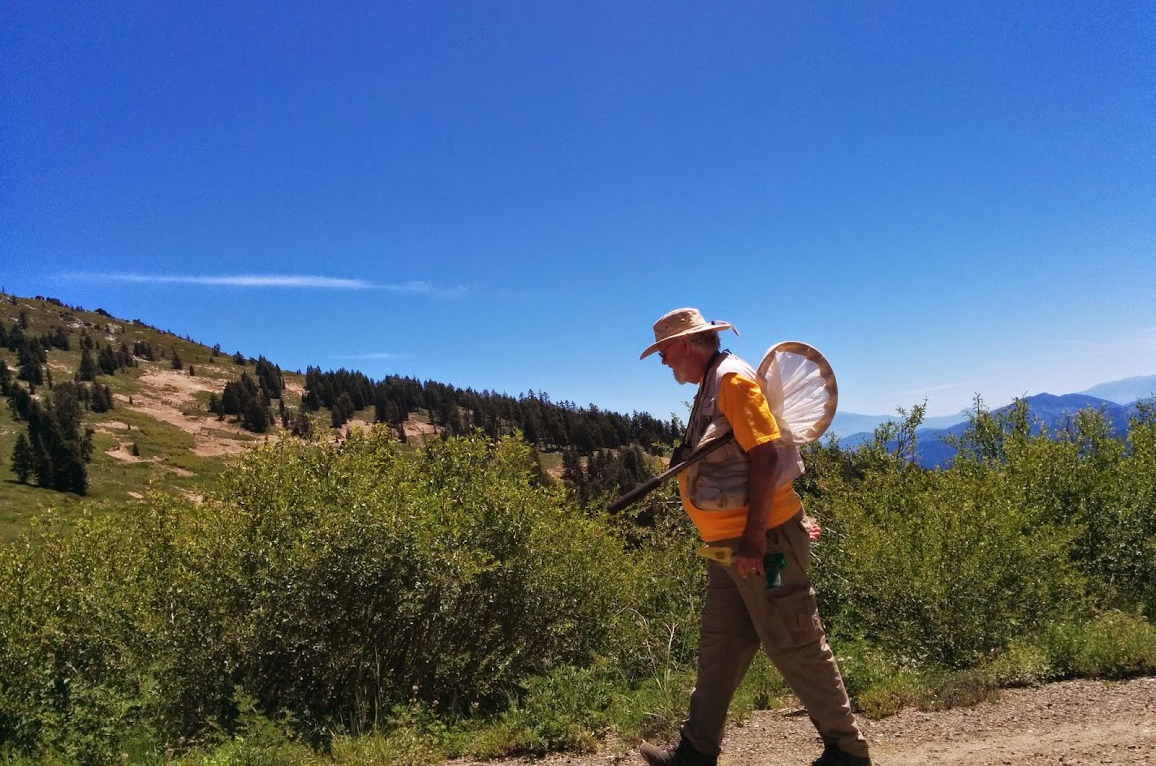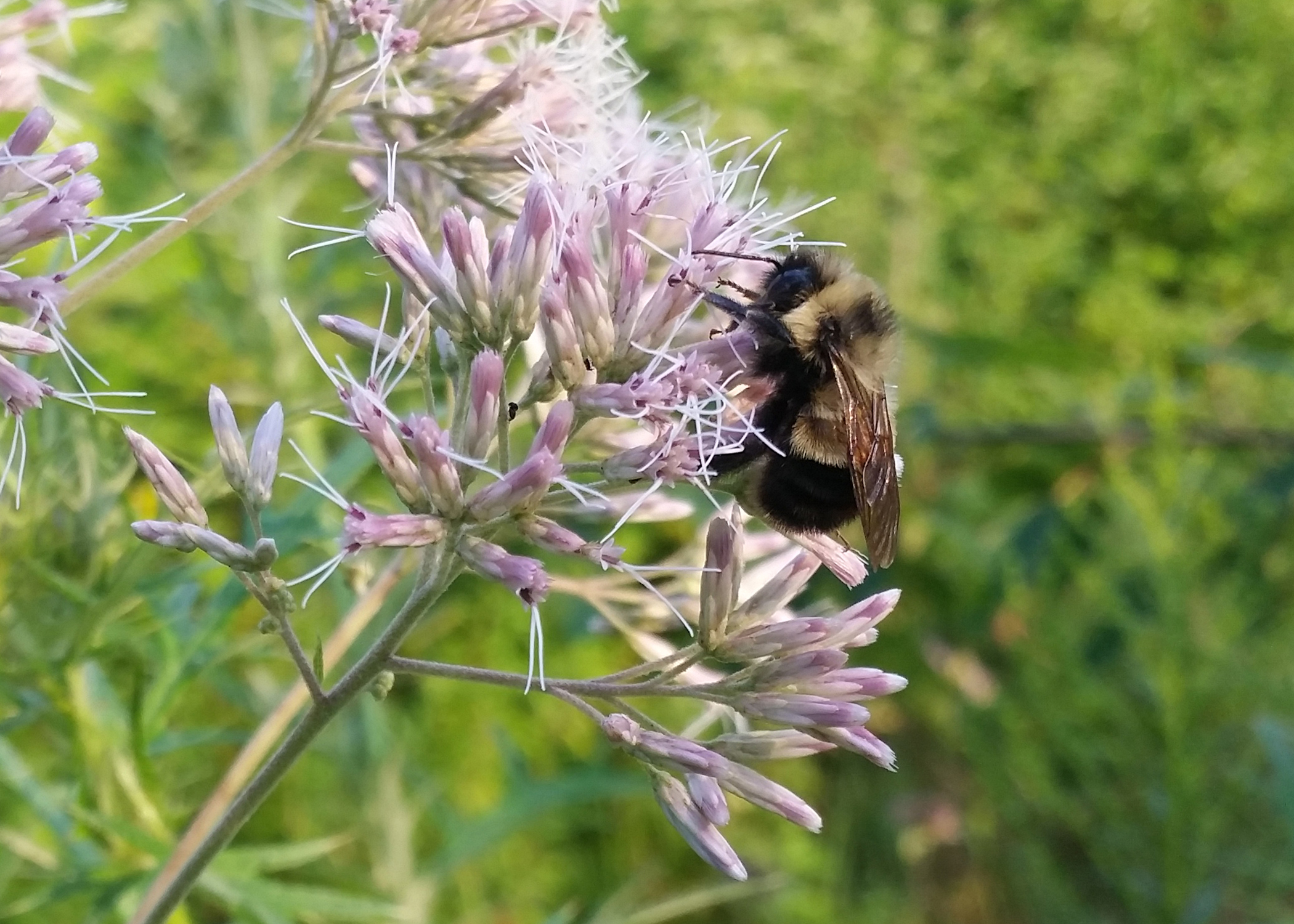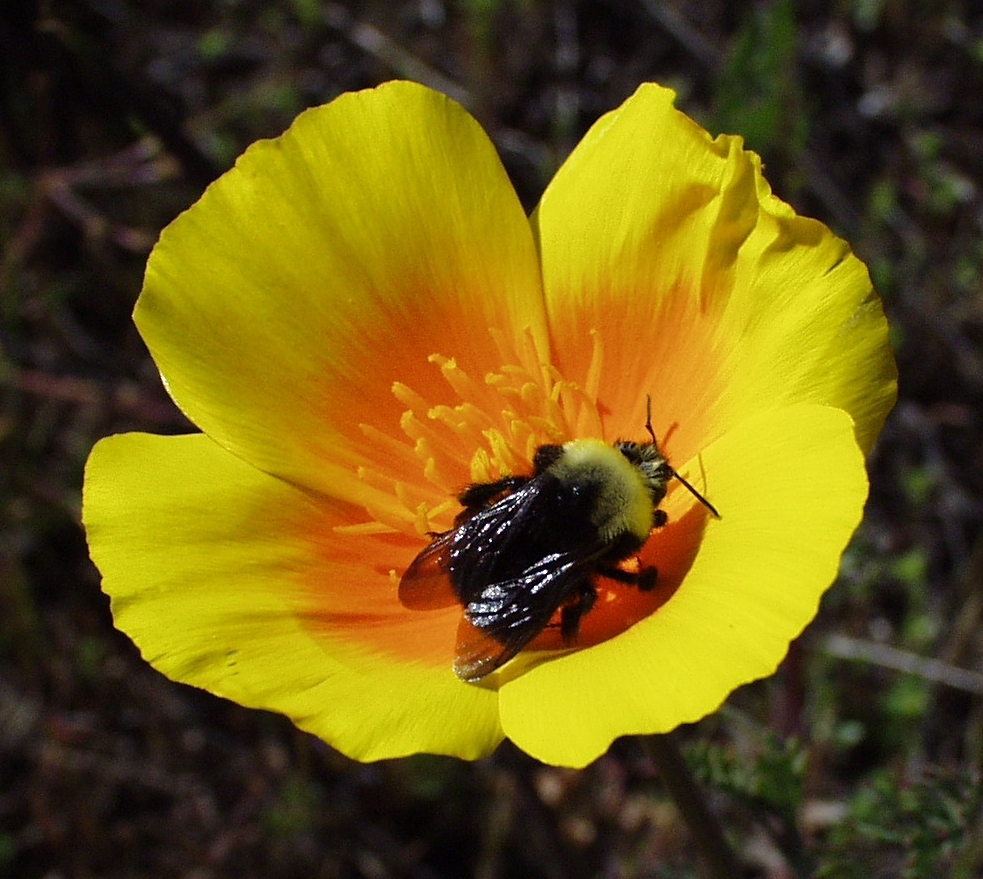Update: Robbin Thorp, a legendary and beloved figure in bumble bee conservation, passed away on June 7, 2019. We at Xerces extend condolences to Robbin’s family, and wish to express our gratitude for his immeasurable contributions to bumble bee conservation. Robbin’s work lives on in the countless people he has taught and inspired.
Robbin Thorp, Professor Emeritus at University of California–Davis, has made lasting contributions to the bee conservation community in ways that might never be measured, but will certainly be felt. Significantly, he’s made contributions to our understanding of the pollination of vernal pool plants, and the systematics of their pollinators; the role that everything from urban gardens to natural habitat around farms play in providing habitat for pollinators; and bumble bee distribution and conservation. The conservation world is certainly better off due to these specific contributions, but also, Dr. Thorp has had an intangible impact that reaches further, in ways we might never completely understand. As such, it is fitting to recognize this legend of North American bumble bee conservation during Earth Week.

Over the last decade, the Xerces Society has given presentations on bumble bee conservation all over North America to thousands of people. Because of the contributions Dr. Thorp has made to bumble bee conservation, it is hard to give a talk without mentioning his name. So it should come as no surprise that, after our talks, at least one person approaches afterward to sing the praises of Dr. Thorp, how generous he is with his time, and how much they have valued their interactions with him. At times it is an academic researcher that collaborated with Dr. Thorp, but more often it is a layperson that was inspired by Dr. Thorp to get involved in pollinator conservation after talking with him. This kind of contribution is immeasurable and invaluable.
I’ve been lucky enough to work closely with Dr. Thorp over the last 19 years, starting with his work with Dr. Claire Kremen, measuring the ecosystem services of native bees. That seminal research inspired and undergirds much of the agricultural work that the Xerces Society has accomplished, and is continuing more strongly than ever. It also helped to launch my career.
One of my first memories of Dr. Thorp is of him bringing a squash blossom full of many sleepy but buzzing male squash bees (Peponapis pruinosa) who had settled down for the day. Newly awoken, they flew out of Dr. Thorp’s hand one by one—breezing by my face as I stared in awe. As a pollinator novice, this opened a whole new world for me that started me down the path to conserve these beautiful animals. I went on to have Dr. Thorp serve on my graduate committee, and I also learned from him at the annual Bee Course at the Southwest Research Station. I continue to collaborate with Dr. Thorp with the IUCN Bumble Bee Specialist Group, and utilize Dr. Thorp’s bumble bee identification expertise for Bumble Bee Watch both directly and indirectly from Bumble Bees of North America, which he co-authored.

Dr. Thorp’s work also helped to inspire and inform Xerces’ bumble bee conservation programs that I now lead. It was his research in the mid-1990’s that served as the “Robbin in the coal mine” for bumble bee populations in North America (credit for this term goes to Dr. Jamie Strange, USDA-ARS—coined at the recent Pacific Branch Entomological Society Meeting in San Diego, CA at a symposium honoring Dr. Thorp). His work served as the basis for our status review of three North American bumble bees, which, in turn, eventually served as the template for the successful petition to have the rusty patched bumble bee listed as an endangered species.
The early work to find populations of these imperiled bumble bees, spearheaded by Sarina Jepsen, Xerces Endangered Species Conservation Program Director, also eventually gave rise to our successful community science platform Bumble Bee Watch. Bumble Bee Watch now also serves as the platform for our more focused bumble bee community science programs Pacific Northwest Bumble Bee Atlas (launched in 2018) and the newly launched Nebraska Bumble Bee Atlas (coming summer of 2019). Collectively, these platforms now have tens of thousands of volunteers across North America keeping tabs on bumble bee populations and contributing to conservation science.

Without the foresight and careful work of Dr. Thorp, we might not have understood the plight of North American bumble bees until it was too late. Unfortunately, even with the insight of “Robbin in the coal mine” we still may have reacted too slowly for one species from his study area in northern California and southern Oregon: Franklin’s bumble bee (Bombus franklini). This species has not been seen since 2006, and may now be extinct. Franklin’s bumble bee has the unfortunate distinction of having the most limited geographic distribution of any bumble bee in North America and possibly the world. Historically, Franklin’s bumble bee occurred in an area that is only about 60 miles wide, located in the Siskiyou mountains of northern California and southern Oregon.
Fortunately, Dr. Thorp’s work has contributed to scientific knowledge, helped to secure vital protections for the rusty patched bumble bee (Bombus affinis), and has also helped to support and inspire a trained force of community scientists spread across North America, ready to document any future declines, and help prevent that from happening. The best part? You can share in this legacy by joining one of the community science projects mentioned above. Perhaps it will be you who one day documents the continued existence of the Franklin’s bumble bee, a return gift for which Dr. Thorp would be most grateful.
Additional Resources
Check out all of our Earth Week content.
Learn more about the Xerces Society’s Endangered Species Conservation Program.
The Xerces Society’s bumble bee conservation work is supported in part by Beesponsible.




